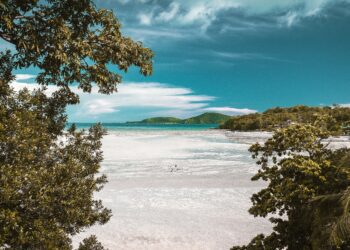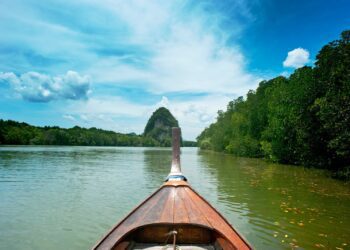Antarctica is one of the most mysterious places on Earth. It’s a place that’s inaccessible to most people, and it’s shrouded in mystery. Few people know anything about this continent, and even fewer know what it’s really like. In this blog post, we’re going to introduce you to Antarctica and show you everything you need to know in order to get a taste for this fascinating place. From weather conditions to wildlife, read on to discover all there is to know about this icy continent.
What is Antarctica?
Antarctica is the world’s largest ice continent and the only one surrounded by the Southern Ocean. It covers an area of 14 million square miles (35 million square kilometers), which is about three times the size of North America and almost twice the size of Europe. Antarctica is so large that it’s sometimes hard to believe that it’s a continent at all.
Most of Antarctica is covered in ice, but there are some areas that are very warm and dry. The Antarctic Peninsula is especially warm, with temperatures reaching as high as 78 degrees Fahrenheit (25 degrees Celsius). The peninsula has a long coastline that’s perfect for exploring, and there are also several fascinating islands off the coast.
The climate in Antarctica can be incredibly different from place to place. The interior of the continent is very cold, while parts of the peninsula are quite warm and sunny. In fact, some parts of Antarctica have average temperatures that are pretty close to those in coastal cities like Miami or Los Angeles.
Despite its huge size, Antarctica isn’t entirely uninhabited. There are a few small settlements scattered throughout the continent, including McMurdo Station, which is located on McMurdo Sound.
The Geography of Antarctica
Antarctica, the world’s southernmost continent, is a place so far away from civilization that it has been dubbed “the last great frontier.” It is also one of the most remote places on Earth, with only limited access by air or sea. In fact, Antarctica is the only continent without a permanent human population.
Despite its remoteness and lack of inhabitants, Antarctica has long been known for its harsh environment – including the world’s most extreme weather conditions. The continent is covered in ice and snow, which makes it difficult to access and study. However, recent advances in technology have made it possible to explore Antarctica more closely than ever before.
What are some of the highlights of Antarctica?
Some of the most popular destinations for tourists visiting Antarctica include the McMurdo Station research base and Scott Base near Victoria Falls. These destinations offer visitors stunning views of icy mountains and rushing rivers. Other popular attractions include hiking trips to glaciers and observing wildlife such as seals and penguins.
What are the different types of Antarctica?
Antarctica is the world’s southernmost continent, located south of the Antarctic Circle, and is by far the largest and most isolated. The ice sheet covers an area of more than 14 million square kilometers (5.5 million square miles), making it by far the largest body of ice on Earth. Just over a third of Antarctica is covered in ice, with the remainder consisting of mountains, rivers, and other landforms.
The Antarctic ice sheet is a massive feature on Earth, both in terms of size and influence. The ice sheet accounts for around 90 percent of all global sea-level rise – more than any other single factor – due to its ability to add mass to seawater as it melts. Because Antarctica is so cold and dry, its melting does not contribute as much to global sea level changes as melting elsewhere on Earth would. However, if current trends continue, Antarctica will contribute almost half of all future global sea level rise by 2100.
There are a number of different types of terrain found throughout Antarctica: coastal plains; plateaus; mountainous regions including ranges; valleys; deep crevasses; and glaciers. Coastal plains are characterised by extensive sandy beaches that run parallel to the coastlines – they’re relatively flat compared to other areas of Antarctica, making them good locations for towns and tourist facilities. Plateaus are large elevated regions that are generally surrounded by mountains – they tend to be rugged and often have snow-capped peaks at their summit. Ranges
The Climate of Antarctica
Antarctica is the world’s largest and driest desert. It covers an area of about 13 million square kilometers, making it about two-thirds the size of North America and almost as large as Europe. Antarctica is divided into three regions: the Antarctic Peninsula, the Antarctic Plateau, and the East Antarctic Ice Sheet.
The climate of Antarctica is extremely variable because of its close proximity to the equator and the surrounding oceans. Winters are cold and wet, with average temperatures ranging from -10 degrees Celsius to 0 degrees Celsius. Summers are hot and dry, with average temperatures ranging from 0 degrees Celsius to 30 degrees Celsius. The average annual rainfall in Antarctica is only 20 millimeters, which means that it receives very little rainfall compared to other parts of the world.
Because Antarctica has no outlet to the sea, it has a very low rate of evaporation. This results in a very dry environment with low levels of humidity. Because there is so little vegetation in Antarctica, air pollution is also very high in this region.
The Wildlife of Antarctica
What makes Antarctica different from other continents?
Antarctica is the only continent without a coastline. It’s mostly ice and snow, with mountains that soar to over 13,000 feet (4,100 meters). The climate is incredibly cold, with average temperatures ranging from −60 degrees Fahrenheit (−51 degrees Celsius) in the winter to 85 degrees Fahrenheit (29 degrees Celsius) in the summer. Because of these extreme conditions, Antarctica is home to a wide variety of wildlife.
Some of the most famous Antarctic animals are penguins, lemmings, and seals. Penguins are perhaps the most well-known Antarctic animal because they’re so easily seen. Lemmings are small mammals that migrate to the poles in search of food. Seals live all around Antarctica and eat a variety of things including fish, krill, and ice creamicles (a type of seal).
Tourism in Antarctica
Antarctica is one of the most inaccessible places on Earth and has been for centuries. The continent is huge, covering more than 14 million square miles, making it about the size of North America. It also has a cold climate, with temperatures averaging around -50 degrees Celsius (-58 degrees Fahrenheit). This makes Antarctica one of the harshest environments on Earth, with only 0.2 percent of its land having vegetation.
The only way to explore Antarctica is by air or ice. Air travel to the continent is limited to research flights and commercial tourism ventures. There are no permanent human settlements in Antarctica. Instead, visitors stay in temporary campsites or lodges during their visit. The only way to get around Antarctica is by boat or helicopter.





















